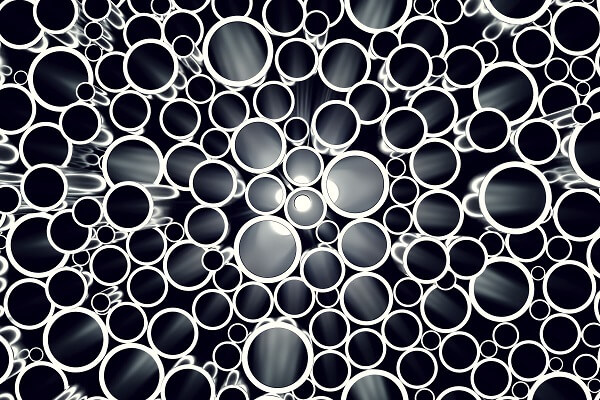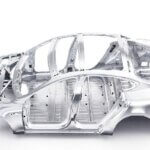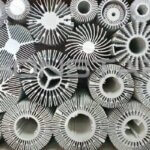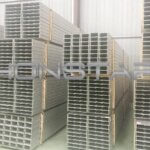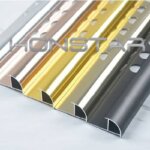The alloy and temper choosing of aluminum extrusion for your project
The alloy and temper choosing of aluminum extrusion for your project
The choice of aluminum alloy and temper for your project will depend on several factors, including the required strength, ductility, corrosion resistance, and weldability.
Choosing the right alloy and temper for aluminum extrusions in your project is crucial as it directly impacts the material’s properties and performance.
Here are some key considerations:
Here is a general overview of the different aluminum alloys and tempers:
Aluminum Alloys
The different aluminum alloys are designated by a four-digit number system.
The first digit indicates the major alloying element, and the second two digits indicate the percentage of that element in the alloy.
The last digit indicates the temper of the alloy.
The most common aluminum alloys for aluminum extrusion are:
1xxx: These alloys are non-heat treatable and are known for their good ductility and formability.
They are often used for applications where these properties are important, such as cans, foil, and closures.
3xxx: These alloys are also non-heat treatable and are known for their good corrosion resistance.
They are often used for applications where corrosion resistance is important, such as marine applications and food processing equipment.
5xxx:
5083: Excellent corrosion resistance and used in marine applications.
6xxx: These alloys are heat treatable and are known for their good strength and stiffness.
They are often used for applications where these properties are important, such as aircraft, automotive, and structural components.
6063: Commonly used for architectural and general-purpose applications. It offers good formability, corrosion resistance, and an attractive finish.
6061: Known for its strength, weldability, and versatility. It’s often used in structural applications.
7xxx: These alloys are also heat treatable and are known for their high strength and stiffness.
They are often used for applications where these properties are critical, such as aerospace and defense applications.
Aluminum Tempers
The temper of an aluminum alloy refers to its heat treatment and/or cold working history.
Tempers are designated by a letter or letter-number combination.
The most common tempers for extruded aluminum are:
O: This is the annealed temper, and it is the softest and most ductile temper.
H: This temper indicates that the alloy has been cold worked.
The higher the number after the H, the more cold worked the alloy is, and the stronger and stiffer it is.
F: This temper indicates that the alloy has been solution heat treated and quenched.
It is a relatively soft temper, but it has good strength and formability.
T: This temper indicates that the alloy has been solution heat treated and aged.
It is the strongest and stiffest temper.
T4:
Solution heat-treated and naturally aged. Provides good formability and moderate strength.
T5:
Cooled from an elevated temperature shaping process and then artificially aged. It offers good strength and formability.
T6:
Solution heat-treated and then artificially aged. Provides the highest strength and is commonly used for structural applications.
T52:
Stress-relieved by stretching after cooling. Offers improved formability.
T73:
Solution heat-treated, stress-relieved by controlled stretching, and artificially overaged. Provides improved toughness.
Choosing the Right Alloy and Temper
The choice of aluminum alloy and temper for your project will depend on the specific requirements of the application.
Here are some general guidelines:
Strength:
If strength is the primary requirement, then a 6xxx or 7xxx alloy should be chosen. The temper should be T4 or T6.
Ductility:
If ductility is the primary requirement, then a 1xxx or 3xxx alloy should be chosen. The temper should be O or H111.
Corrosion resistance:
Consider the environmental conditions your project will face and choose an alloy with suitable corrosion resistance.
If corrosion resistance is the primary requirement, then a 1xxx, 3xxx, or 6xxx alloy should be chosen. The temper should be O or H111.
Weldability:
If the weldability is a requirement, then a 6xxx or 7xxx alloy should be chosen. The temper should be F or T4.
Application Requirements:
Identify the specific mechanical properties required for your application, such as strength, hardness, and toughness.
Formability:
Depending on your fabrication processes, select an alloy and temper that offers the necessary formability.
Weight Considerations:
Different alloys have varying densities, affecting the overall weight of your extrusions.
Cost:
Balance your performance requirements with budget constraints.
Surface Finish:
Some alloys are better suited for aesthetic finishes, so consider the appearance requirements of your project.
Heat Treatment:
If post-extrusion heat treatment is required, choose an alloy that responds well to heat treatment.
It is important to note that these are just general guidelines.
The specific requirements of the application should always be consulted before making a final decision on the alloy and temper.
If you are unsure which alloy and temper is right for your project, it is always best to consult with an experienced aluminum extruder.
They can help you to choose the right materials and processes to ensure that your project is a success.
Always consult with your material supplier or a materials engineer to ensure the chosen alloy and temper align with your project’s specific needs.
Conducting tests and prototypes is also advisable to validate the chosen material’s performance in your application.
Why are alloy and temper very important for aluminum extrusion?
Alloy and temper are crucial considerations in the context of aluminum extrusion due to their significant impact on the material’s properties, performance, and suitability for specific applications.
Here’s why alloy and temper are essential in aluminum extrusion:
Mechanical Properties:
Alloy: Different aluminum alloys offer varying levels of strength, hardness, and other mechanical properties.
The choice of alloy allows you to tailor the material to meet specific performance requirements, whether it’s high strength for structural applications or enhanced formability for intricate shapes.
Temper: The tempering process further refines the mechanical properties of the aluminum.
It can influence factors such as hardness, toughness, and yield strength.
The tempering process allows for the optimization of the material’s characteristics to suit the intended application.
Formability:
Alloy: The choice of alloy affects the extrudability and formability of the material.
Some alloys are well-suited for intricate shapes and complex designs, while others may be more suitable for straightforward extrusions.
Temper: Certain tempers can enhance or reduce the material’s formability.
For example, tempers like T4 and T5 are known for good formability, making them suitable for shaping during the extrusion process.
Corrosion Resistance:
Alloy: Aluminum alloys have different levels of corrosion resistance.
The choice of alloy is crucial in applications where exposure to corrosive environments is a concern.
For example, marine applications may require alloys with enhanced corrosion resistance.
Temper: The tempering process can influence the material’s susceptibility to corrosion.
Proper heat treatment can enhance corrosion resistance, ensuring the longevity of the extruded aluminum in challenging environments.
Strength Requirements:
Alloy: Different applications demand various levels of strength.
Alloys like 6061 and 7075 are chosen for their high strength, making them suitable for structural components in aerospace and other high-stress applications.
Temper: Heat treatment (tempering) plays a significant role in achieving the desired strength.
The T6 temper, for instance, is known for providing high strength in aluminum extrusions.
Heat Treatment:
Alloy: Certain alloys respond better to heat treatment, and the choice of alloy can impact the feasibility and effectiveness of post-extrusion heat treatments.
Temper: The tempering process itself involves controlled heating and cooling, affecting the internal structure of the material.
This process is essential for achieving specific mechanical properties.
Aesthetic and Surface Finish:
Alloy: Some alloys are chosen for their aesthetic qualities, such as improved surface finish and appearance.
Alloys like 6063 are often used in architectural applications due to their favorable appearance after extrusion.
Temper: The temper can also influence the surface finish and appearance of the extruded aluminum.
The choice of temper may be critical in applications where aesthetics are important.
In summary, the careful selection of alloy and temper in aluminum extrusion allows for customization of the material’s properties to match the specific requirements of a given application.
This tailored approach ensures that the extruded aluminum performs optimally in terms of strength, formability, corrosion resistance, and other essential characteristics.

